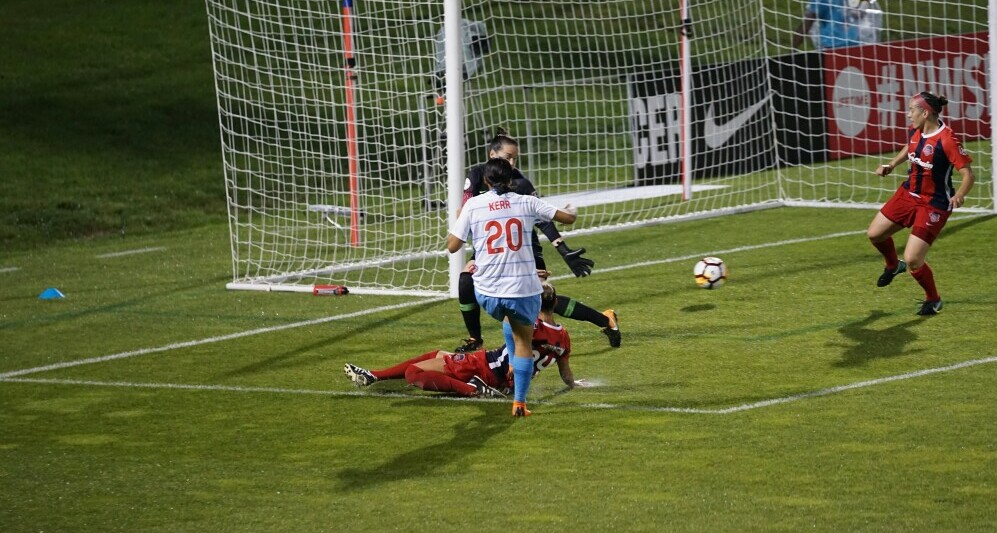
Transition in soccer basically means changing from defense to attack (or vice versa) in a flash. It’s those crucial moments that can make or break a game.
Transitional play holds a special place in modern soccer. It’s like the heartbeat of a game – quick, decisive, and highly influential. Teams that master this can turn defensive setups into attacking opportunities within seconds, catching the opponent off guard.
There are specific phases in a defensive-to-attacking transition. It starts with winning possession, whether through tackling, intercepting passes, or forcing errors. Then, comes the crucial phase – the actual switch. Players need to think fast and move even faster. Finally, there’s the execution, where teams exploit the newly gained space to launch a counter-attack.
Transitional play doesn’t just affect the team shifting from defense to attack. It transforms how both teams position and react. The defending team suddenly finds themselves needing to regroup and cover potential threats, while the attacking team has to capitalize on any disorganization. This split-second chaos is what makes transitional play so exciting to watch.
Key Techniques for an Effective Transition
Quick decision-making under pressure is non-negotiable. Players must read the game, anticipate opponents’ moves, and react instantly. A well-timed pass, a sudden burst of speed, or an unexpected dribble can turn defense into a lethal attack in seconds.
Communication between players is the glue that holds a team’s efforts together during a transition. Verbal and non-verbal cues help everyone know their roles and adjust their positioning quickly. A shout, a gesture, or even eye contact can signal a teammate to make a crucial move.
Technical skills are the foundation. Players need to be adept at passing, dribbling, and shooting under pressure. Practicing these skills at a high tempo can make a world of difference. The ability to control the ball and execute precise actions while on the move is key.
Positioning and movement are central to creating and exploiting spaces. When transitioning from defense to attack, players must be aware of their surroundings and move into spaces that can disrupt the opponent’s setup. Intelligent movement can pull defenders out of position, creating gaps to exploit.
The goalkeeper’s role in transition might be overlooked, but it’s vital. A quick, accurate throw or kick can initiate a fast break. Goalkeepers need to be alert and act as the first playmaker, setting the tone for a swift counter-attack.
Common Challenges and Solutions in Transitional Play
Dealing with high-pressing opponents is a headache. They can close down space and limit passing options. To counter this, players need to stay calm, use quick one-two passes, and switch the play to less congested areas. Creativity in passing routes opens up the game.
Minimizing errors during the transition is critical. Mistakes can lead to dangerous counter-attacks by the opposition. Focus on precision, avoid risky passes in critical areas, and ensure teammates are always available as passing options. It’s about keeping things simple and effective.
Maintaining team structure and discipline is challenging but essential. In the excitement of attacking, players can get carried away and lose their defensive shape. A sturdy transition requires balance. Some players should always be ready to fall back and cover if the attack breaks down.
Adjusting to different game situations and formations can throw any team off their game. Whether it’s adapting to a rival’s game plan or dealing with unexpected scenarios, flexibility is key. Practicing various formations and scenarios in training helps players stay prepared and adaptable on match day.
Mental and physical fitness are the backbone of smooth transitions. Transitioning from an intense defensive effort to a swift attack demands peak physical condition and mental sharpness. Regular conditioning, mental focus exercises, and recovery routines ensure players can execute transitions efficiently, even late in the game.
Training Drills to Improve Transitional Play
Small-sided games are perfect for working on transitions. These intense, fast-paced games mimic real match scenarios and force players to think quickly, communicate effectively, and adapt on the fly. They’re a great way to build chemistry and understanding among teammates.
Drills focusing on speed and agility are a must. Being able to sprint, change direction, and accelerate quickly can make a huge difference during transitions. Incorporate ladder drills, cone exercises, and shuttle runs to help players get faster and more responsive.
Exercises that enhance communication and teamwork are essential. Setting up drills where players must constantly talk and signal to each other ensures they’re always in sync. These can be as simple as passing drills where players must call out names or more complex setups requiring strategic planning.
Simulating game scenarios during practice helps players prepare for the real thing. Create drills that replicate potential transitional moments, like winning the ball in your own half and launching a counter-attack. This helps players get used to the decisions they need to make during actual matches.
Tracking and analyzing performance metrics can provide a clear picture of how well transitions are being executed. Use video reviews, GPS trackers, and other tools to gather data on speed, positioning, and decision-making. Reviewing this information helps identify areas for improvement and track progress over time.
